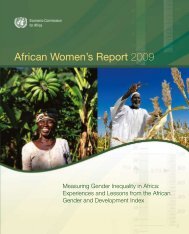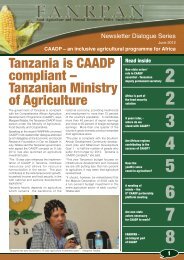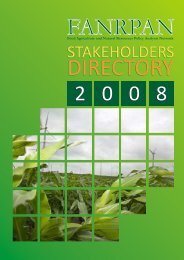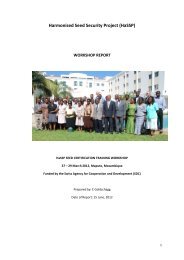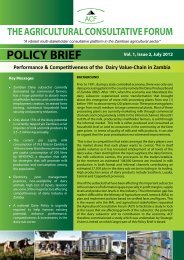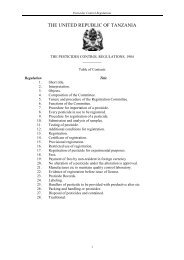Community-driven development decision tools for rural - IFAD
Community-driven development decision tools for rural - IFAD
Community-driven development decision tools for rural - IFAD
- No tags were found...
Create successful ePaper yourself
Turn your PDF publications into a flip-book with our unique Google optimized e-Paper software.
Impact on the local economyCDD project <strong>for</strong>mulation or appraisal reports should explain what specific measures areenvisaged to maximize the project’s impact on the local economy at the community level. A goodanalysis of these ideas, and of their implications <strong>for</strong> project management, may throw light on thelinkages between project objectives, project design and implementation procedures and mayillustrate the need to reconsider important design <strong>decision</strong>s.Projects can make a significant impact at the community level with their own directexpenditure. The larger the expenditure on contracts with local micro-suppliers, the greater theimpact on the local economy and the CDD content of the project. Further, the total impact willoften be much greater than the simple amount contracted locally because of the multiplier effect.Two key issues confront CDD project designers. One is the extent to which specialprocurement procedures can be devised and accepted by government and donors to maximizeprocurement of goods and services from community-level contractors. The other concerns thespecial arrangements and extra cost involved in negotiating and supervising the larger number ofcontracts required to seriously pursue a local procurement policy. These issues must beadequately considered at appraisal so that sufficient resources are available to implement theproject consistent with its objectivesScaling up CDD projectsThe success of CDD’s initial tests in area-based, small scale pilot projects presents the challengeof “scaling up” to larger, regional and national projects. 25 “Scaling up” is the evolution from aproject’s boutique phase to mass application. Innovative financial products introduced by<strong>development</strong> agencies in the late 1990s, such as Flexible Lending Mechanisms (FLM), offerpotential <strong>for</strong> doing this in a phased manner over time.A major problem in scaling up is that the pilot projects are generally designed to test methodsof achieving results without much attention to financial replicability. Scaling up requires a drasticreduction in the costs of supporting the CBOs, including the costs <strong>for</strong> training and monitoringtheir per<strong>for</strong>mance. Major donors have often been required to reduce their costs of administeringprojects. Major bilateral agencies and international <strong>development</strong> agencies, including leading onessuch as the World Bank, have opted to merge their CDD approach with support <strong>for</strong>administrative re<strong>for</strong>m, which led to concentrating investments at the district level of the localgovernment. Certain projects, such as some in West Africa, were designed at the national leveland involved many districts.In many countries, <strong>IFAD</strong> has funded area-based projects which supported successive phases oflocal <strong>development</strong> over a fairly long period. Through these projects, <strong>IFAD</strong> has accumulated muchexperience in addressing the problems of local communities, including incorporating increasingamounts of CDD content in successive phases. In Asia, Latin America and West and CentralAfrica, experiences have been positive, have helped highlight difficulties in project design andimplementation and have identified areas <strong>for</strong> future interventions and topics <strong>for</strong> policy dialogue.An important outcome of this experience is the emerging capacity of CBOs to handle theirown <strong>development</strong> affairs at a fraction of the cost of similar activities undertaken by governmentor private service providers. 26 If intelligently pursued, this experience may provide an answer tothe issue of costs in addressing the subdistrict and community level. Another answer may comefrom mobilizing private sources of cofinancing through philanthropic NGOs and partnering withcities in developed countries.25 See World Bank specialized literature on scaling up, <strong>for</strong> example Hans Bingswanger & Swaminathan Aiyar. Scaling up<strong>Community</strong>-Driven Development, Draft World Bank document, August 2002.26 In WCA, <strong>IFAD</strong> project implementation experience provides examples of this in Mauritania (PDDO) and Senegal (POGV II).52




